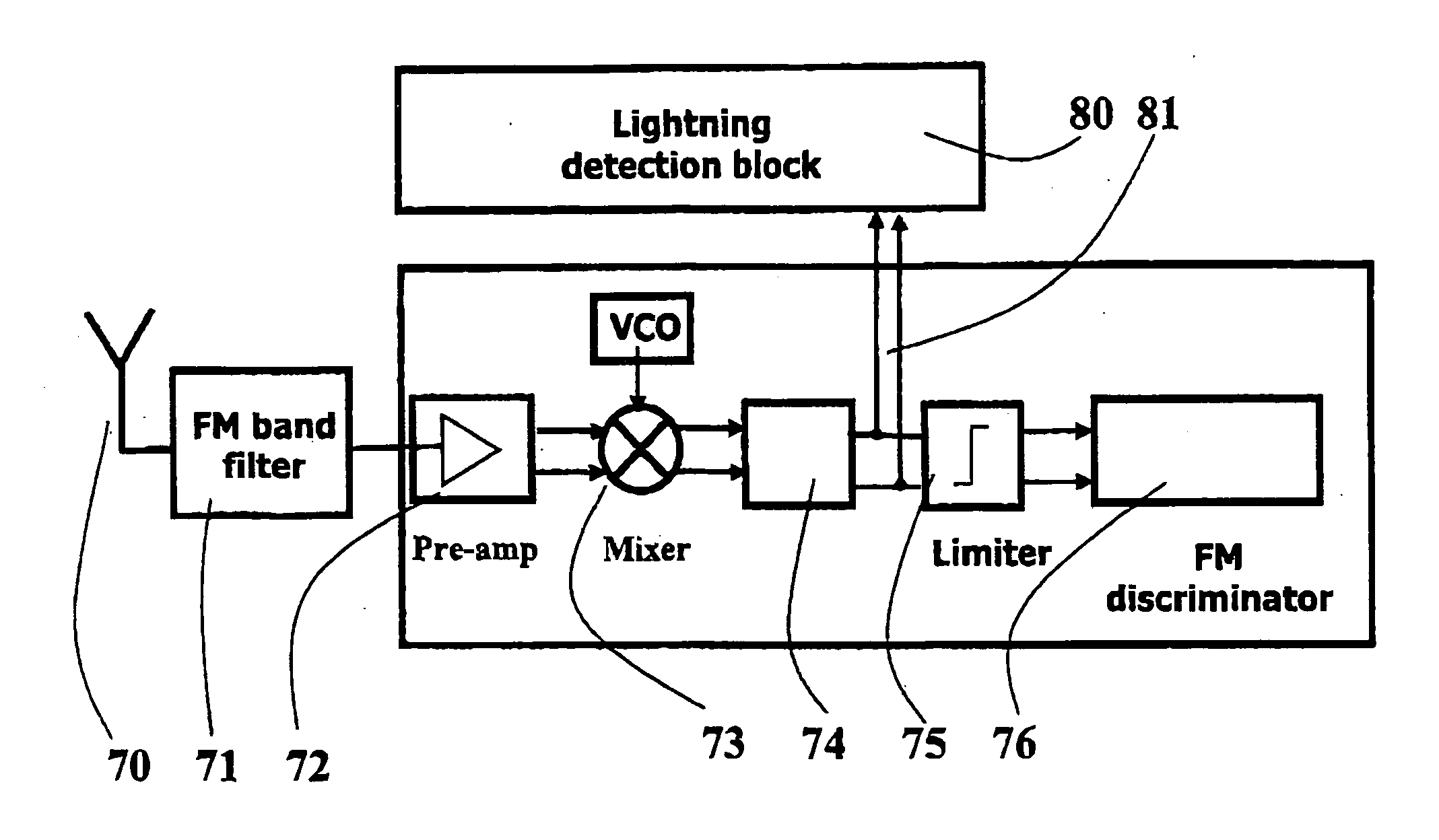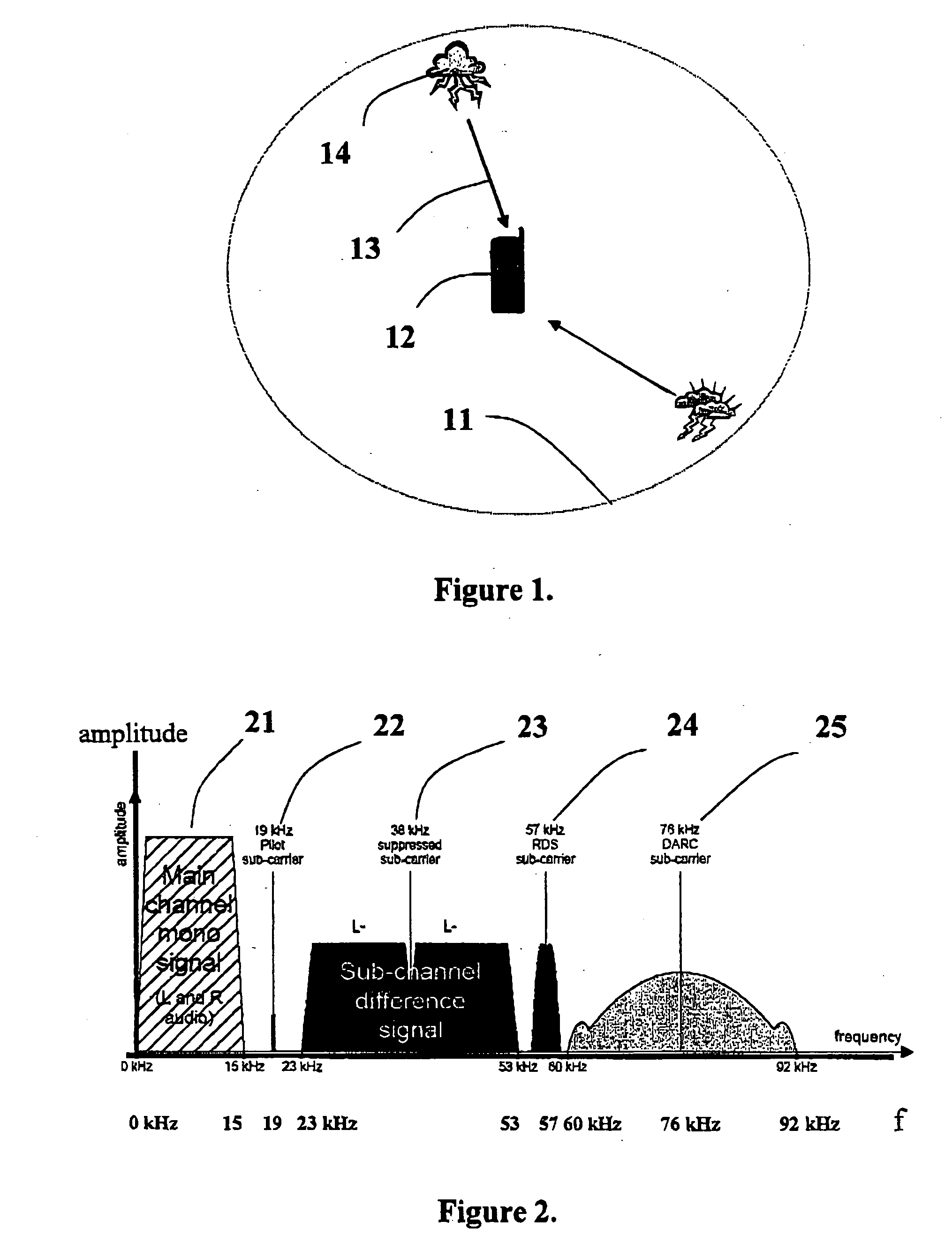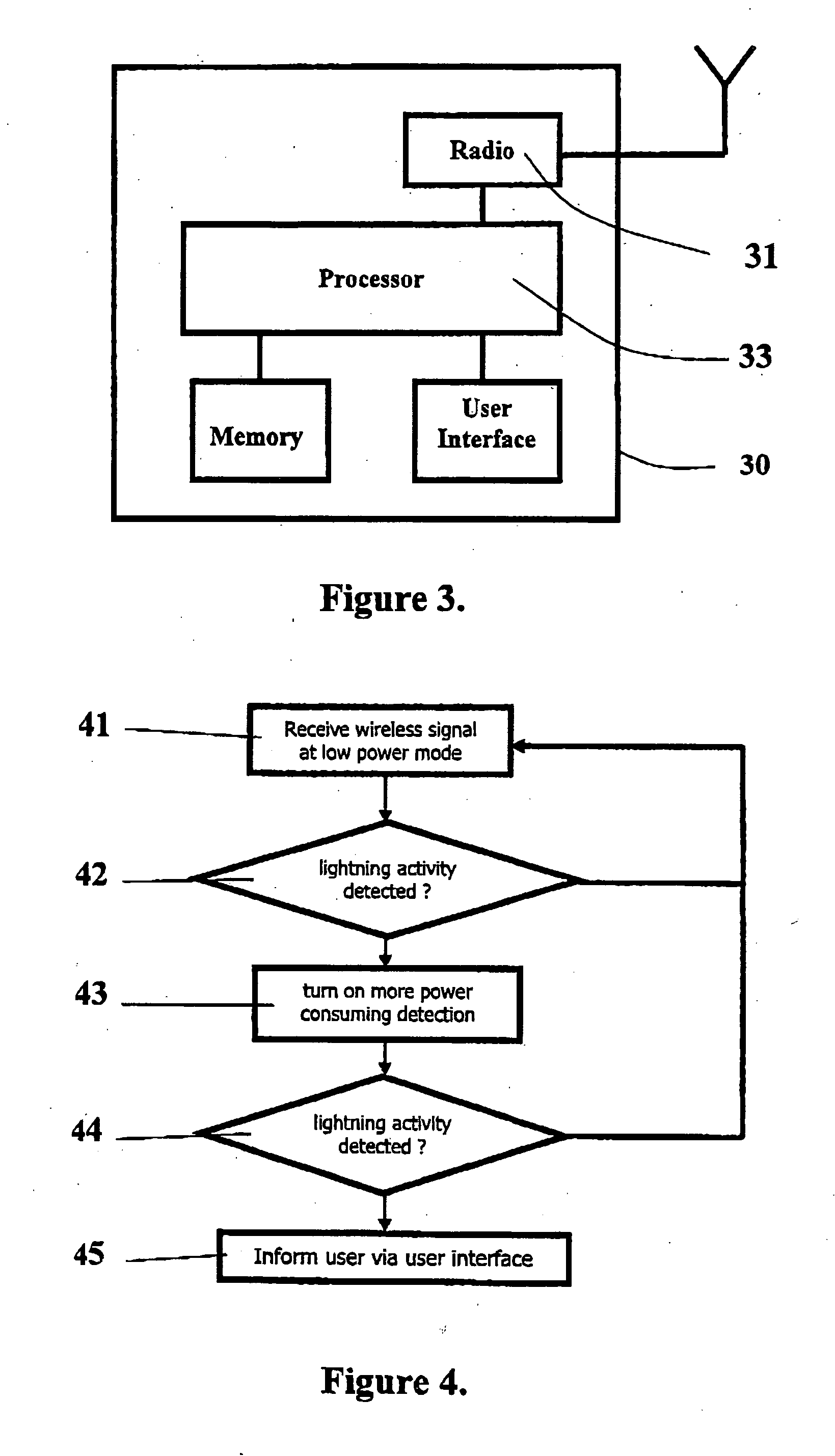Detection of lightning
a detector and light source technology, applied in the field of light source detection, to achieve the effect of shortening the time to market, limiting costs, and minimizing hardware changes
- Summary
- Abstract
- Description
- Claims
- Application Information
AI Technical Summary
Benefits of technology
Problems solved by technology
Method used
Image
Examples
embodiment 1
[0051] In the first embodiment the FM receiver path from antenna to the discriminator 70, 71, 72, 73, 74, 75 and 76 has an additional intermediate output 81 would be between the down-conversion mixer 73 and the limiter stage 75. The circuit block 74 contains amplification and frequency selection means. The intermediate signal containing the amplitude information caused by the RF emission from lightning strokes is input via 81 to a lightning detection specific block 80. In this implementation alternative the detection bandwidth would be similar to the selected FM channel (100-200 kHz).
embodiment 2
[0052] In another embodiment alternative the intermediate output 82 is arranged immediately after the low-noise preamplifier 72. In this alternative the detection bandwidth would be the whole FM band (e.g. 87.5-108 MHz in Europe) as passed on by the FM band filter 71 between the antenna 70 and the low noise preamplifier 72. This alternative embodiment could advantageously be used in trigger mode for lightning-like signals. The received power on the band could be measured with a wideband power detector and if fast wideband signals (like lightning strokes) exist in the signal, a more accurate detection could be started e.g. on one of the FM channels.
[0053] One possibility is to have an additional separate down-conversion mixer for the lightning detector. This is indicated as 83 in the lightning detection block 80 of FIG. 8 and the arrangement would allow simultaneous lightning detection and FM radio reception on different or the same FM bands.
[0054] However, this kind of implementat...
embodiment 3
[0055] Lightning detection can advantageously take place in an empty FM channel. Finding of an empty FM channel is easy using the conventional FM stereo receiver path. The found empty channels can be used for lightning detection. As presented above, lightning detection on an empty FM channel would require an intermediate output after down-mixer in the FM receiver. The reason for this is that the FM modulated signal is limited to a low amplitude before frequency demodulation in the FM discriminator 76. The limiting extracts the signal caused by RF emission from a lightning stroke and after the limiter no lightning detection is possible. In addition, if no FM signal exists on the FM channel, the noise of FM demodulator increases significantly. Merely this increment of noise makes detection of lightning hard although it otherwise would be possible from the demodulated but empty FM channel. For lightning detection the FM discriminator should be replaced with an AM detector sensitive to ...
PUM
 Login to View More
Login to View More Abstract
Description
Claims
Application Information
 Login to View More
Login to View More - R&D
- Intellectual Property
- Life Sciences
- Materials
- Tech Scout
- Unparalleled Data Quality
- Higher Quality Content
- 60% Fewer Hallucinations
Browse by: Latest US Patents, China's latest patents, Technical Efficacy Thesaurus, Application Domain, Technology Topic, Popular Technical Reports.
© 2025 PatSnap. All rights reserved.Legal|Privacy policy|Modern Slavery Act Transparency Statement|Sitemap|About US| Contact US: help@patsnap.com



